

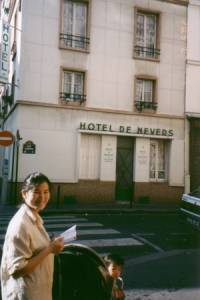 This
was the hotel we stayed in while in Paris. It is right next to the
Republique Plaza. The night we arrived was the eve of presidential
election day. There was a political demonstration in the Plaza
because the ultra-right wing candidate (some called him a fascist) lost to
the incumbent. This
was the hotel we stayed in while in Paris. It is right next to the
Republique Plaza. The night we arrived was the eve of presidential
election day. There was a political demonstration in the Plaza
because the ultra-right wing candidate (some called him a fascist) lost to
the incumbent. |
 Where
the hotel was located relative to some famous French locations. Where
the hotel was located relative to some famous French locations. |
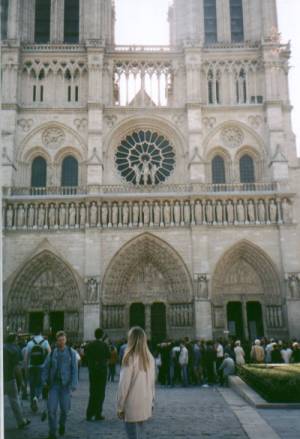 Here's
Notre Dame on the Isle of the City. It's impressive as you walk up
to it because of the incredible detail of the statues. Here's
Notre Dame on the Isle of the City. It's impressive as you walk up
to it because of the incredible detail of the statues. |
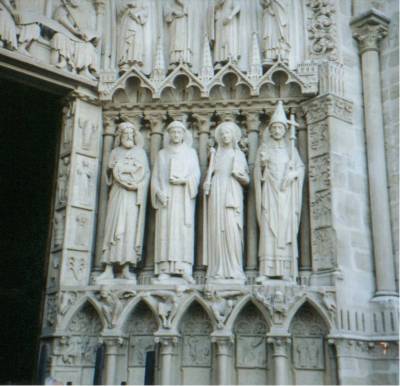 The
statues depict either biblical characters or French saints. The
statues depict either biblical characters or French saints. |
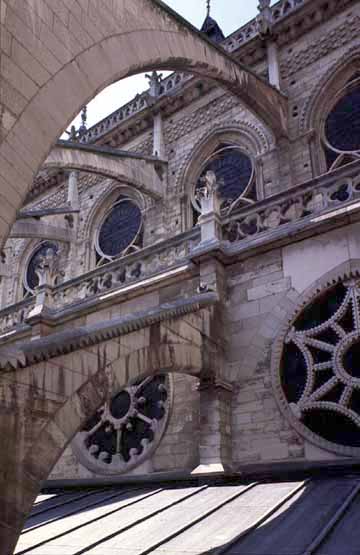 The
following four pictures are taken from website pictures of Notre Dame and
were much better than ours. The flying buttresses are quite
impressive. What architect thought of doing that? The
following four pictures are taken from website pictures of Notre Dame and
were much better than ours. The flying buttresses are quite
impressive. What architect thought of doing that? |
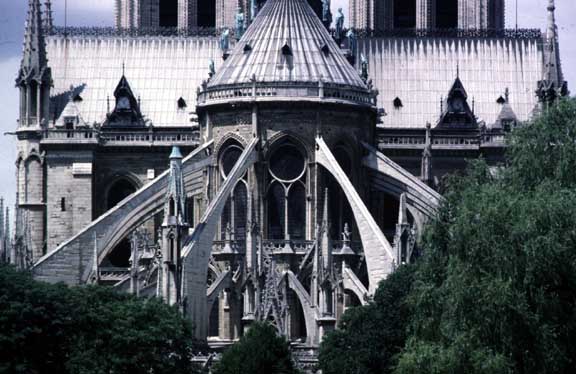 |
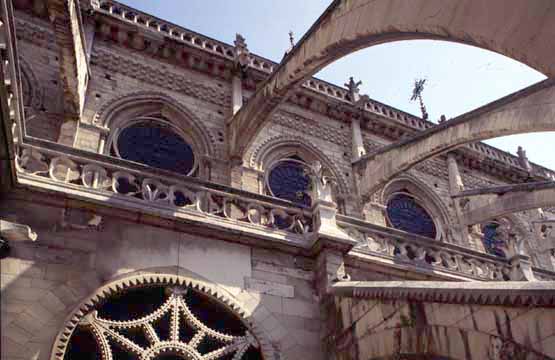 |
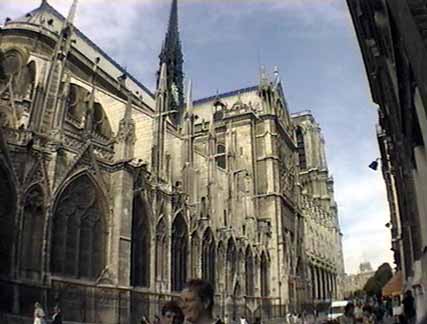 |
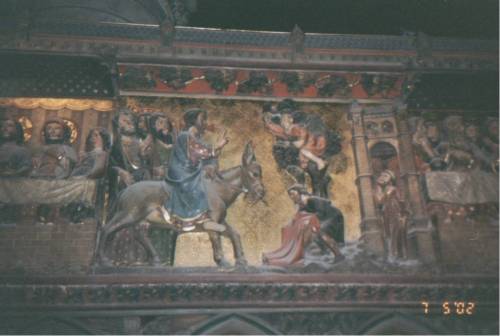 Inside
Notre Dame are carvings of Bible scenes. During periods of
widespread illiteracy, these pictures were used to teach or remind folk of
the biblical message. Zaccheus climbing a tree to see Jesus.
(Lk.19) Inside
Notre Dame are carvings of Bible scenes. During periods of
widespread illiteracy, these pictures were used to teach or remind folk of
the biblical message. Zaccheus climbing a tree to see Jesus.
(Lk.19) |
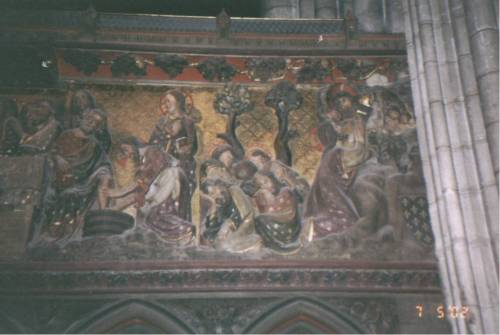 Jesus
washing his disciples' feet, the disciples asleep in the Garden of
Gethsemane, and Jesus praying in the Garden. Jesus
washing his disciples' feet, the disciples asleep in the Garden of
Gethsemane, and Jesus praying in the Garden. |
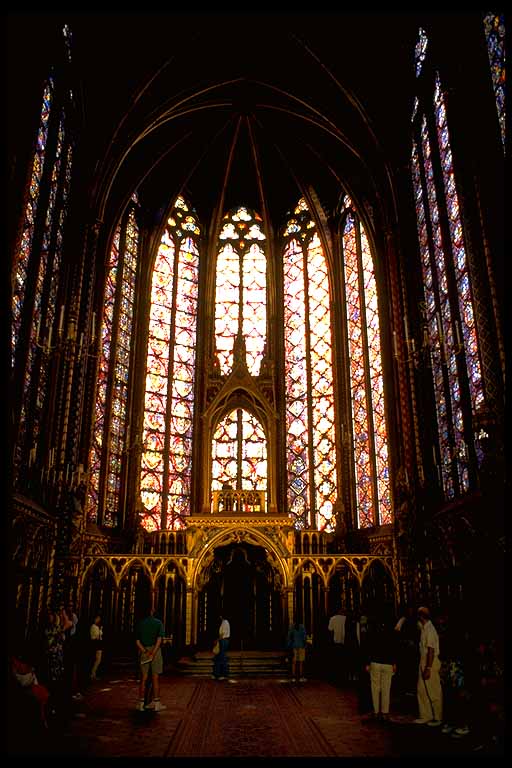 Also
on the Isle of the City is Sainte Chapelle. This Gothic Catholic
chapel was built in Paris in 1246 during the Middle Ages by Saint Louis,
the king of France. It was
designed as a shrine for a crown of thorns supposedly worn by Jesus. The
crown was bought from Constantinople (Istanbul in Turkey) when many
European nobles fought Muslims to wrest Jerusalem. Also
on the Isle of the City is Sainte Chapelle. This Gothic Catholic
chapel was built in Paris in 1246 during the Middle Ages by Saint Louis,
the king of France. It was
designed as a shrine for a crown of thorns supposedly worn by Jesus. The
crown was bought from Constantinople (Istanbul in Turkey) when many
European nobles fought Muslims to wrest Jerusalem.
There are 15 colorful stained glass windows. Each window portrays events from a biblical book. At the center window, shown here (though you can't see it), is the death and resurrection of Jesus. To the right are more shots of Sainte Chapelle. These pictures are from a website. |
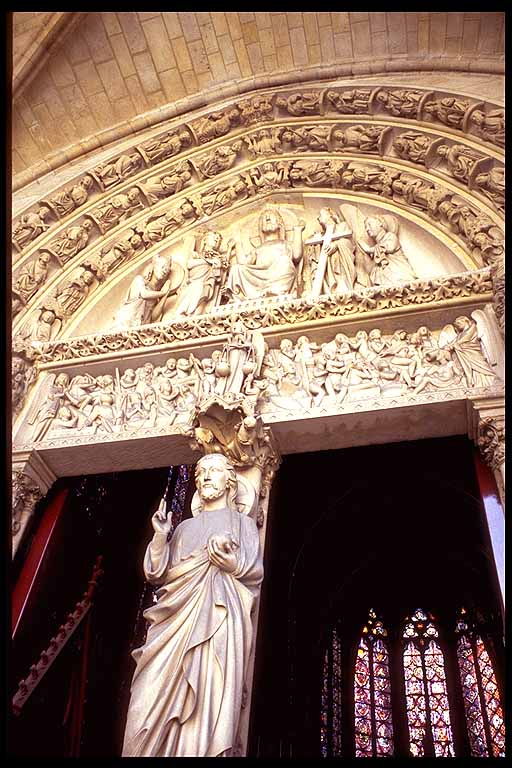 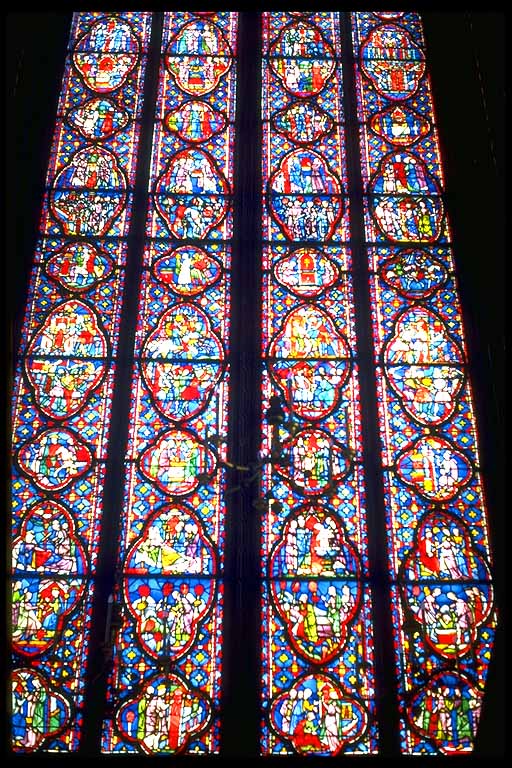 |
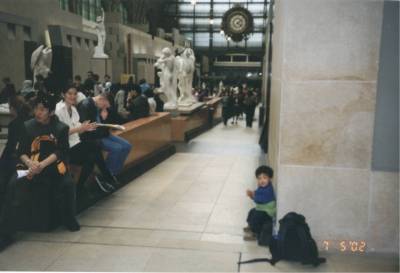 Then
we walked down the Boulevard St. Germaine to the Musee d'Orsay, housing a large collection of French
impressionists. The Musee is a converted train station. Then
we walked down the Boulevard St. Germaine to the Musee d'Orsay, housing a large collection of French
impressionists. The Musee is a converted train station.
|
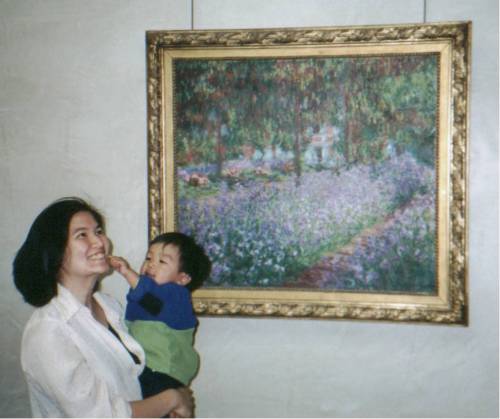 In
the Musee d'Orsay: Ming has a print of this Monet at home. It
was quite special to finally see the original. In
the Musee d'Orsay: Ming has a print of this Monet at home. It
was quite special to finally see the original. |
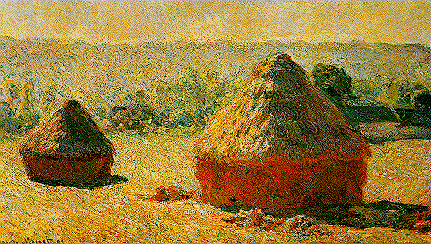 Here
are some paintings we saw (taken from the Musee
d'Orsay website): one of Monet's Haystacks
paintings. Here
are some paintings we saw (taken from the Musee
d'Orsay website): one of Monet's Haystacks
paintings. |
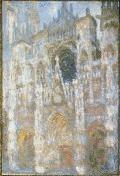 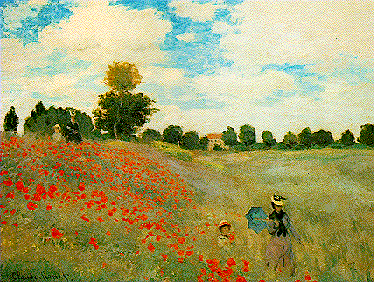 Monet's
Poppies (1880) and Rouen Cathedral. Harmony in Blue
(1893). Monet's
Poppies (1880) and Rouen Cathedral. Harmony in Blue
(1893). |
|
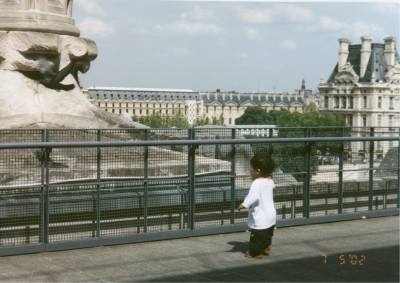 Here
is the view from the top of the Musee d'Orsay. It is right across
the river from the Louvre. Here
is the view from the top of the Musee d'Orsay. It is right across
the river from the Louvre. |
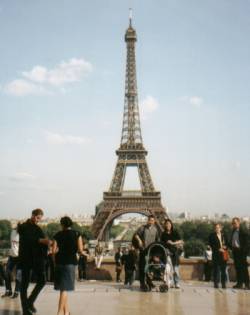 The
Eiffel Tower was built in 1889 against lots of opposition. It was
named for Gustave Eiffel, the architect. On inauguration day (March
31, 1889), Eiffel climbed the 1710 steps to the third level of the
tower. He unfurled the French flag to a 21 cannon salute.
Eiffel later inscribed these words in a woman's fan : " the French
flag is the only one with a 300 meter pole." The Tower was the
highest building in the world until New York's Chrysler Building in 1930. The
Eiffel Tower was built in 1889 against lots of opposition. It was
named for Gustave Eiffel, the architect. On inauguration day (March
31, 1889), Eiffel climbed the 1710 steps to the third level of the
tower. He unfurled the French flag to a 21 cannon salute.
Eiffel later inscribed these words in a woman's fan : " the French
flag is the only one with a 300 meter pole." The Tower was the
highest building in the world until New York's Chrysler Building in 1930. |
|
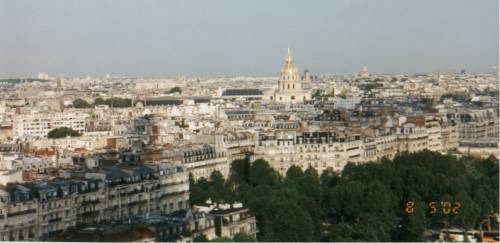 |
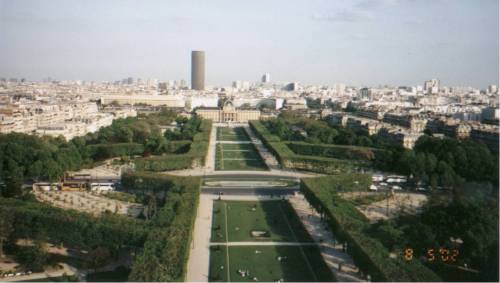 Here
is a view of Paris from the first floor of the Eiffel Tower. Paris
doesn't have a lot of tall buildings. Here
is a view of Paris from the first floor of the Eiffel Tower. Paris
doesn't have a lot of tall buildings. |
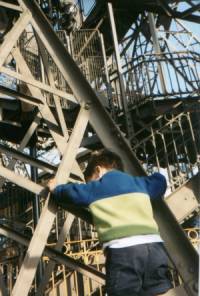 "Must...keep...going..."
John acquired a taste for climbing on this trip, into his stroller, and up
the Eiffel Tower. "Must...keep...going..."
John acquired a taste for climbing on this trip, into his stroller, and up
the Eiffel Tower. |
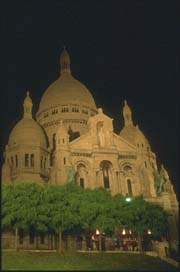
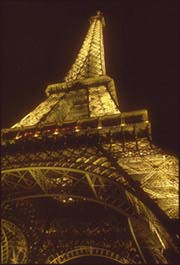 Later in the evening, we took a night
boat ride down the Seine River. Many buildings along the river are
illuminated. These pictures are postcard pictures. Later in the evening, we took a night
boat ride down the Seine River. Many buildings along the river are
illuminated. These pictures are postcard pictures.
|